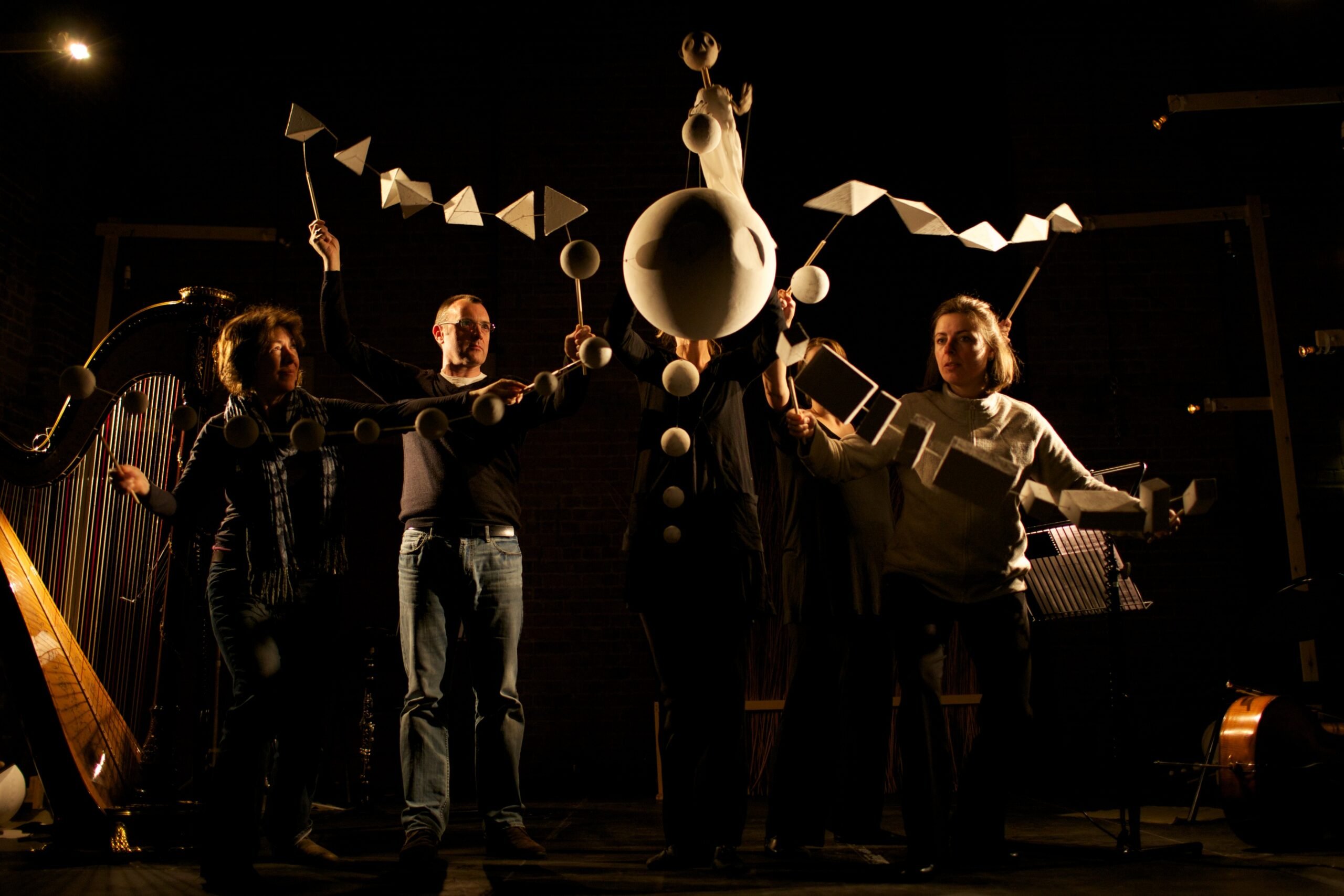
London Sinfonietta's recent Blue Touch Paper preview event
Photo: Briony Campbell
Critical friends
What happens when audiences give feedback to artists and composers as part of the process of creating new work? Andrew Burke decided to find out – and liked what he found.
The London Sinfonietta has been commissioning new work since its inception in 1968. Over 350 such commissions and countless more world-premiere performances later, we still have an unquenchable thirst to make new music. In March last year, as well as our normal round of commissioning concert work from composers, we launched a new phase of work through the Blue Touch Paper programme1 – a scheme that gives composers the time and budget to explore collaborations with other artforms, through workshops with players and reflection with mentors. We were interested to see what the programme could teach us about the process of creation of new music, and what we could do better to support composers in making new music.
Through the enlightened nudge of our principal funder on the Blue Touch Paper programme, The Jerwood Charitable Foundation, I attended a talk at Sadler’s Wells by American choreographer Liz Lerman, who had, for many years, refined her process of ‘Critical Response’, offering a way for artists in dance and theatre to get feedback from audiences and producers about the work they were making. Her technique is a carefully curated conversation in four distinct stages allowing the artist to ask how their work is being received, and for audiences to express opinions about the work. The process ensures a constructive response from everyone – unnecessary and thoughtless criticism from audiences and an overly defensive attitude from the artists are avoided by a careful use of language, open questioning, and the structure used in the conversation. As Liz says: “Everyone involved can say everything they want about a work – but you have to be patient”.
Her presentation reminded me how different the creative process is between different artforms. Dance and theatre evolves more iteratively – making new work ‘on’ the performers during extended devising and rehearsal periods, in a way which can shape the content and final structure of a piece. Similarly, the work of an author can be altered before publication by an editor in order that it connects more directly with the readership. But it is still striking how little development time and process of this kind exist for new music composition. One-off workshops with players are becoming more common – often at the composer’s request – yet repeated opportunities for one work are rare, and the possibility of audiences feeding back to composers about how their new work is coming across while it is being made almost never happens. It seemed a worthwhile experiment, therefore, to see what we could learn by running the Critical Response process on the new work being made on our Blue Touch Paper programme; so three groups of 15 audience members spent 50 minutes discussing the works with the composers and artists involved immediately after a ‘work in progress’ showing at the end of the programme in mid-May.
The response from the artists was enlightening. “I am massively suspicious of processes like this” says Seonaid Goody, puppeteer, on the project ‘Half of Me’, at the start of the process. “Do we really need to analyse how an audience responds? Can we not just get on with it, and make the work?” And yet, by the end of the process her reaction had changed: “There were some very exciting practical ideas [in the feedback] about how to stage certain moments, inspired by what we had done, but taking things further….it left us feeling that we want to get back in the rehearsal room.” Anna Jones, director on the same project, added: “it was empowering to hear what had been experienced as meaningful [and also] helpful to hear about specific moments and ideas which were potentially confusing or perhaps could benefit from another look.”
For the composers, the feedback about their music was also formative: “Some people commented on feeling that the singing and words made them aware their emotions were being directed in a way they hadn’t when it was purely instrumental in the first half”, explained Elspeth Brooke. Philip Venableshas already begun to incorporate the process in other work he is developing: “[the Critical Response session] encouraged me to stick to my guns with the concept and style of my writing. I would definitely recommend the process. I am trying to use it on an opera project I am now working on.” It was striking from the experience that none of the composers and artists felt compromised by going through the process – rather energised and excited to continue their work. The feedback just gave a reality check on how their artistic intention was being received. The choice of how that affects the further development of their work is still completely within their artistic control – and it will be interesting to see how it affects the progress of these pieces.
The positive reaction to Critical Response has encouraged us at the London Sinfonietta to plan to use the technique more often on work being written for us: the process is now embedded in the Blue Touch Paper programme for work that will be shown in May 2013. And because we think the benefits are worth sharing, we will also be running a one-day conference with the Guildhall School of Music and Drama exploring Liz Lerman’s technique as it relates to music and interdisciplinary work in general.
Andrew Burke is Chief Executive of the London Sinfonietta
Join the Discussion
You must be logged in to post a comment.